- Home
- W. Somerset Maugham
Mrs Craddock Page 2
Mrs Craddock Read online
Page 2
The French scholar Joseph Dobrinsky has written that Mrs Craddock depicts with “passionate veracity” a “painful experience of the author,” and there can be little doubt that, despite the gender transposition, there are autobiographical elements in the portrayal of Bertha Craddock. Like Maugham, Bertha has spent some of her formative years on the Continent, “educated as best could be in a half a dozen countries” while traveling with her father after her mother’s death. When Bertha was eighteen, her father died in Naples, and she spent the next three years touring Europe with her maiden aunt, experiencing the great cities, the ancient churches, and the art of the greatest galleries. Just as Maugham had become cosmopolitan in his years in France and Germany, Bertha developed a sophistication that alienates her from the parochial life of her native Kent. By contrast, her husband’s experience of the world has remained as circumscribed and provincial as his education at the Regis School.
Surely, too, in the final pages of the novel, Bertha’s retreat into literature and music as an escape from her empty marriage and the ennui of her life in rural Kent comes from the author’s own experience. Like the young Philip in Of Human Bondage—and perhaps the Maugham who all his life traveled with a bag full of books—she finds in reading “a refuge from all the distress of life.” She reads the Renaissance epic Orlando Furioso, John Lyly’s Euphues, the poetry of Paul Verlaine, the memoirs of Saint-Simon, Edward Gibbon’s The History of the Decline and Fall of the Roman Empire, and Cervantes’s Don Quixote. “Bertha found reality tolerable,” writes Maugham, “when it was merely a background, a foil to the fantastic happenings of old books; she looked at the green trees, and the song of birds mingled agreeably with her thoughts still occupied with the Dolorous Knight of La Mancha, with Manon Lescaut, or the joyous band that wanders through the Decameron. . . . Living away from the present, in an artificial paradise, Bertha was happy.”
Bertha thus retreats from the disappointments of her emotional life into a world of detachment, ideas, and cosmopolitanism. In doing this she begins to emulate her aunt Polly Ley. Throughout the novel, Miss Ley’s cool objectivity and compassionate, non-judgmental detachment serve as a foil for her niece’s unrestrained passion, but at the end the younger woman adopts her aunt’s outlook on life.
Miss Ley must surely be a rarity among fictional characters in having a novel dedicated to her, as she is in Maugham’s Epistle Dedicatory to the early editions of Mrs Craddock. There he claims to have first met her in Naples, in the Gallery of Masterpieces while looking at a statue of Agrippina, a work of art that many years later he claimed was itself the inspiration for her character. It has been suggested, however, that the real model for Miss Ley was Maugham’s Aunt Julia, who had cultivated a close friendship with a very much younger man. Maugham’s own relationship with Julia was warm enough that he dedicated The Hero to her in 1901, and on her death nine years later, she left him her house near Hyde Park.
Miss Ley resembles Julia Maugham in some aspects, but it is very much more likely that she was based on Mrs. George W. Steevens, to whom Maugham dedicated The Explorer in 1907. Like many of the stage women of the time, she was a woman with a past, having suffered social exile because, as one of the mistresses of Sir Charles Dilke, she had a role in his divorce. Following this scandal, she rehabilitated her reputation with charitable work and married the very much younger George Steevens, a respected journalist who was killed while covering the Boer War for the Daily Mail in 1900. Having an independent income, Mrs. Steevens became one of London’s lion-hunting society hostesses, entertaining intellectual and bohemian London in her London flat and her house, Merton Abbey, situated about eight miles out of the city. Among the painters, actors, and writers who might be found at one of her evenings were Max Beerbohm, Henry Arthur Jones, Reggie Turner, George Street, William Pett Ridge, and the young Willie Maugham.
Maugham appreciated Mrs. Steevens’s wit, still sharp and lively for a septuagenarian, and was amused by her iconoclastic good sense. Because of the considerable difference in their ages, there was no sexual tension between them, and they developed the close relationship so common between homosexual men and older women. Like Miss Ley with Bertha, Mrs. Steevens lived apart from the pressures of Maugham’s professional career and the complications of his emotional life, and so she became a trusted confidante and mentor.
Maugham introduced Miss Ley in Mrs Craddock and developed her character more fully in The Merry-Go-Round, published in 1904 (in one of those careless slippages to which authors are sometimes prone, she is called variously “Mary Ley” and “Polly Ley” in both novels). Part confidante, part raisonneuse, and part chorus, she looks on the pretensions and follies of the other characters with a witty cynicism; at the same time, she observes their suffering with sensitivity and sympathy. She is an amusing commentator, fully independent, intelligent, and free of humbug.
Miss Ley may have been based on Mrs. Steevens but, as Maugham’s autobiographical writings reveal, she voices many of the author’s own beliefs (particularly in The Merry-Go-Round). Thus she marks an important stage in Maugham’s development as an author: in Laurence Brander’s words, she is “the first character in the oeuvre whom we can describe as typically Maugham.” Her persona, writes Frederic Raphael, “is the first to have the Maughamian quality of detached worldliness that he was to wish on Willie Ashenden and finally on the character whom he called Mr Maugham.”
Indeed, from Mrs Craddock on, in both his fiction and drama, Maugham increasingly told his stories through the eyes of detached, cynical observers or through a first-person narrator who places the reader at a filtered distance from the action. In The Moon and Sixpence, the amoral, compulsive painter Charles Strickland is described by a narrator who, being an author immersed in the London social and literary milieu, looks upon the tempests of his life with amusement and detachment. In Cakes and Ale, the narrator is again a writer who amuses himself by giving a portrait of a celebrated author, Edward Driffield, which undercuts the false, bowdlerized picture given the public by his first wife and her friends. Here the narrator is called Willie Ashenden, the same name given the cynical British espionage agent in Ashenden, a short-story collection based on Maugham’s experiences in World War I and published in 1928. By the time that he wrote The Razor’s Edge sixteen years later, the novelist and the narrator had virtually become one, and the avuncular cosmopolitan author who observes the passions and misadventures of a younger generation is called Mr. Maugham.
V. S. Pritchett once described the narrator of so much of Maugham’s fiction—and one might include here the many characters who function therein as shrewd and literate observers—as “the Great Dry Martini in person.” It was in both forms a persona that Anthony Burgess declared unique: “Here again was something that English fiction needed—the dispassionate commentator, the ‘raisonneur,’ the man at home in Paris and Vienna but also in Seoul and Djakarta, convivial and clubbable, as ready for a game of poker as for a discussion on the Racine alexandrine, the antithesis of the slippered bookman.” Miss Ley, at home in Florence and Paris, familiar with the social and cultural life of London, and ready to puncture the pretensions of the hidebound characters who frequent Court Leys, is the first of such voices in Maugham’s writing.
Set against the cosmopolitanism and culture of Bertha and Miss Ley is Bertha’s husband, Edward, who, as the anonymous reviewer in Academy and Literature recognized within weeks of the novel’s appearance, is its most fully delineated character:
The character of Edward Craddock, the gentleman-farmer, is drawn with absolute conviction. His lack of imagination, his impassivity, his equanimity, his good nature, his utter inability to put himself in another’s place, even the trait of obstinate vanity which leads to his too timely death—all these things combine to make a human mediocrity that is vividly alive.
Born into the yeoman class—that is, the class of small landowners and farmers—Craddock rises to the squirearchy through his marriage to Bertha, who has inherited Cour
t Leys and the surrounding land. This betrothal, proposed and pursued with great vigor by Bertha, evokes outrage in her guardian, Dr. Ramsay, because Edward is not a gentleman and he seems to be interested in Bertha only for her money. As the squire of Court Leys, however, Craddock proves to be a good manager and careful businessman, and the estate thrives once again after years of neglect.
Ironically, at the time when his wife has grown beyond the values and outlook of the landed gentry of which her family has been part for a century, Craddock becomes almost a caricature of the British squire of the late nineteenth century. He is, writes Richard Cordell, “unimaginative, narrowly patriotic, energetically a good fellow, conservative, virtuous. He is a stupid and a happy man. He has no doubts, no struggles, no self-criticism.” Craddock is also a philistine, insensitive, and smugly patriarchal in dealing with his wife. “Women,” he says, “are like chickens. . . . Give ’em a good run, properly closed in with stout wire netting, so that they can’t get into mischief, and when they cluck and cackle just sit tight and take no notice.”
Published in November 1902, Mrs Craddock is technically an Edwardian novel, but since it was written several years earlier, it should more properly be considered one of the last pieces of British Victorian fiction. Moreover, its creation and publication occurred on either side of one of the profoundly important watershed events in the history of the British national character: the Boer War, when for two years a small and sparely equipped band of South African farmers and guerrilla fighters held the world’s greatest imperial power at bay. At the start of the war in 1899, the mood of the British ruling and moneyed classes was optimism and certainty—the empire, and its prestige and wealth, would inexorably grow. After the war, in which the Boers won much of what they had been fighting for, the country was shaken by doubt and the fear that its imperial power was waning.
Edward Craddock, however, being a late Victorian—Maugham identified the period in which the action of Mrs Craddock takes place as the 1890s—has none of these doubts and fears. He is sure of his right to control the estate of Court Leys, to rule his country (“I tell you,” he brags to his wife, “I shall be an M. P. before I die”), and to see that country dominate much of the world. He is convinced that there is no better music than “good honest homely English airs” and that the English are morally superior to the other races. “What we want now,” he tells Bertha, “is purity and reconstitution of the national life. I’m in favour of English morals, English homes, English mothers, and English habits.” It is the same confident jingoism that elicits thunderous applause when he speaks during his campaign to be elected a county councilor: “He turned the tap of patriotism full on; it gurgled out in a stream. He blew the penny trumpets of English purity, and the tin whistles of the British Empire, and he beat the big drum of the Great Anglo-Saxon race. He thanked God he was an Englishman and not as others are.”
As Mrs Craddock progresses, Craddock grows into his position of squire of Court Leys, and that growth is not merely in arrogance, complacency, and self-centeredness. In the opening pages, when Bertha is infatuated with the twenty-eight-year-old farmer, he is slender, youthful, and masculine. Within a few years of marriage and life as a landed gentleman, however, he begins to put on weight and change shape. “He was filling out,” observes Miss Ley, “prosperity and a consciousness of his great importance had broadened his back and straightened his shoulders; he was quite three inches more round the chest than when she had first known him, and his waist had proportionately increased. If he goes on developing in this way, she thought, the good man will be colossal by the time he’s forty.” In other words, if Craddock continues to develop as he has been doing, he will soon be the human equivalent of John Bull, the traditional cartoon caricature of self-satisfied, prosperous, middle-class Britain.
In making Court Leys, a country house, the focal point of Mrs Craddock, Maugham anticipated a practice that became common among British novelists in the decade that followed the book’s publication. In Edwardian Fiction, Jefferson Hunter provides a selection of these literary houses and offers an explanation for such a focus:
Worsted Skeynes, Robin Hill, Overdene, Hamlyn’s Purliew, Flickerbridge, Mundham, Burbeck, Catchmore, Weatherend, Newmarch, Matcham, Fawns, Mertle, Beccles, Holm Oaks, Bladesover, Lady Grove, Crest Hill, Pendragon, Friars Pardon, Violet Hill, Holmescroft, Hawkins’ Old Farm, Baskerville Hall, Windy Corner, Cadover, Oniton Grange, Howards End—these are the country houses of Edwardian fiction, and even when listed partially they suggest how heavily the imagination of the decade was invested in landed property.
Novelists used the big house for a number of reasons—one of the simplest being as a confined space within which their fiction could operate—but in many cases, as Hunter points out, “the country house was a definition of England itself.” What happens within the house and its environs, and to its occupants, becomes a microcosm of what is happening to the country as a whole. For example, the question of ownership of Howards End, in E. M. Forster’s novel of the same name, really stands for the question of who should control England: the generous, cultured middle class as embodied by the Schlegel sisters or the entrepreneurs and men of business as exemplified by the men of the Wilcox family.
These contesting approaches are epitomized early in the novel by the clash between Henry’s management of Howards End and his first wife’s wishes for the house, the ancestral home she has brought into the marriage. Enamored of machinery and modernization, and insensitive to her love of tradition and a more organic life, Henry has the horse paddock converted to a garage. As the novel goes on and Mrs. Wilcox dies, Henry’s remarriage, to Margaret Schlegel, is meant to represent a synthesis of the two fundamentally different approaches to life and society, and Margaret’s ultimate ownership of Howards End is Forster’s formula for the future for the country.
Eight years before Forster had created Howards End, Maugham had given readers Court Leys, and he anticipated Forster by showing the clash between Edward Craddock’s utilitarian management of the estate that he, like Henry Wilcox, has assumed by marriage and Bertha’s reverence for her family’s tradition. Having become well established as the master of Court Leys, Edward orders a hedgerow of six beeches to be cut down because nothing will grow under them. He may be sentimental about romantic melodrama, but “when it came to business it was another matter: the sort of sentiment that asks a farmer to spare a sylvan glade for esthetic reasons is absurd. Edward would have willingly allowed advertisers to put up boards on the most beautiful part of his estate, if thereby he could have surreptitiously increased the profits of his farm.” For Bertha, however, the beeches represent the best of her family’s past, which, though she disdains the ethos of the contemporary landed gentry, she respects. “These trees were planted nearly a hundred years ago,” she tells her husband, “and I would sooner die than cut them down.” Moreover, she adds defiantly, “if you have the trees cut down, I shall leave you.” But just as Mrs. Wilcox loses her battle to save the paddock, Bertha cannot save the beeches, and Court Leys continues to be reshaped according to Edward’s philistine vision. And Bertha keeps her word and leaves her husband.
At the end of Mrs Craddock, it is this arrogant and egocentric certainty in his own right to control his world that leads to Edward’s death. Knowing that he is an expert rider, he is “never shy of parading his powers nor loath to taunt others with their inferior skills or courage,” and so he prefers the challenge of riding notoriously unmanageable horses. On one occasion he is thrown by a roan that balks at a rail fence, and he breaks his collarbone. Several weeks later, against the urgings of Bertha and everyone else, he stubbornly takes the same horse over the same course, and he is killed when he is again thrown at the fence.
Whether Maugham intended it or not, Craddock’s death has a significance beyond merely freeing Bertha from a marriage that has become burdensome to her: it means the end of Court Leys as a thriving “big house” of the landed gentry. Bertha, who has never been
attracted to the life of the squirearchy in provincial Kent, intends to rent out the estate and to return to Italy, where she has always felt more at home. Bertha and Edward’s only child was stillborn, and so there will be no heirs to Court Leys. The novel is thus a dramatization of what Maugham wrote in his 1955 preface: “It was the end of an era, but the landed gentry, who were soon to lose the power they had so long enjoyed, were the last to have a suspicion of it. . . . They were gentlefolk. It is true that for the most part they were narrow, stupid and intolerant; prudish, formal and punctilious.”
Looking back on Mrs Craddock so many years later, Maugham would claim only that “it is a picture, faithful, I believe, of life in a corner of England during the last years of the nineteenth century.” This assertion, like many of his self-judgments, is too modest: his novel not only provides a reliable depiction of a particular way of life, it offers a critique of a segment of the upper middle class well before it became a common practice in British fiction to do so. So often in his career, Maugham seemed to be a literary chameleon, sensitive to the popular taste and literary styles of a particular period and skillful in adapting his work to their colorations. Though based on his experiences in the London slums, Liza of Lambeth appeared at a time when realistic slum novels were in vogue in Britain. His autobiographical novel of adolescence, Of Human Bondage, was published in 1915, when the bildungsroman was immensely popular (James Joyce’s A Portrait of the Artist as a Young Man, D. H. Lawrence’s Sons and Lovers, and Compton MacKenzie’s Sinister Street had all been published just two years earlier). Four years later, The Moon and Sixpence joined the long list of Künstlerromane, or artist-hero novels, that were fascinating jaded and disillusioned postwar readers. Finally, in 1944, though Maugham was then seventy years old, he caught the spirit of a new generation with The Razor’s Edge, his novel about Indian mysticism as an escape from the American Dream.

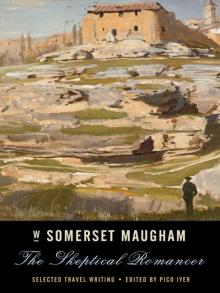 The Skeptical Romancer: Selected Travel Writing
The Skeptical Romancer: Selected Travel Writing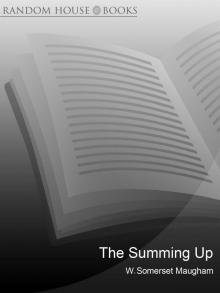 The Summing Up
The Summing Up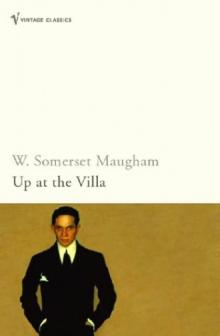 Up at the Villa
Up at the Villa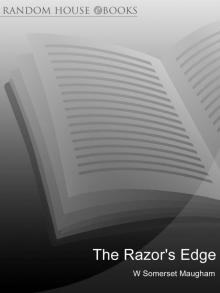 The Razor's Edge
The Razor's Edge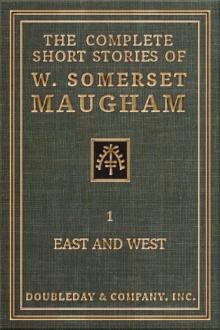 The Complete Short Stories of W. Somerset Maugham: East and West (Vol. 1 of 2))
The Complete Short Stories of W. Somerset Maugham: East and West (Vol. 1 of 2))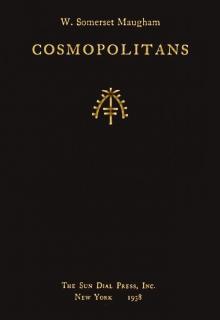 Cosmopolitans
Cosmopolitans 65 Short Stories
65 Short Stories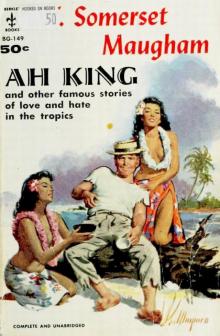 Ah King (Works of W. Somerset Maugham)
Ah King (Works of W. Somerset Maugham)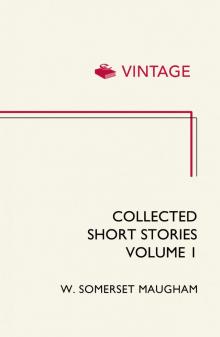 Collected Short Stories: Volume 1
Collected Short Stories: Volume 1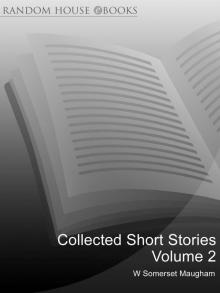 Collected Short Stories Volume 2
Collected Short Stories Volume 2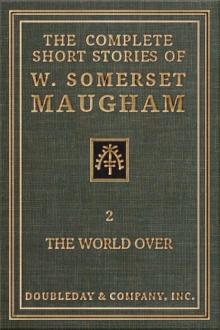 The Complete Short Stories of W. Somerset Maugham - II - The World Over
The Complete Short Stories of W. Somerset Maugham - II - The World Over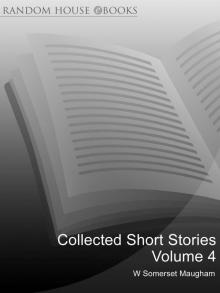 Collected Short Stories Volume 4
Collected Short Stories Volume 4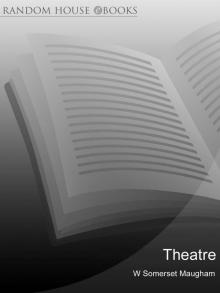 Theatre
Theatre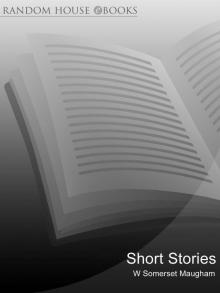 Short Stories
Short Stories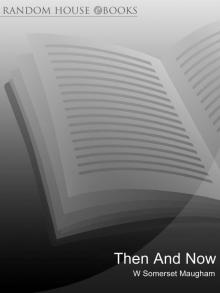 Then and Now
Then and Now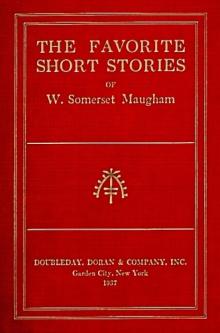 The Favorite Short Stories of W. Somerset Maugham
The Favorite Short Stories of W. Somerset Maugham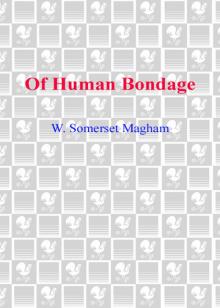 Of Human Bondage
Of Human Bondage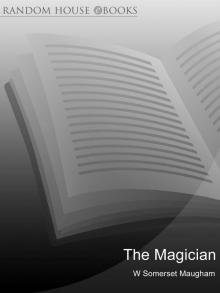 The Magician
The Magician The Great Exotic Novels and Short Stories of Somerset Maugham
The Great Exotic Novels and Short Stories of Somerset Maugham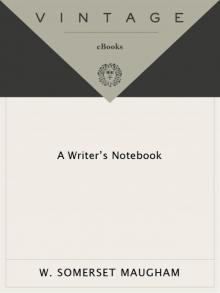 A Writer's Notebook
A Writer's Notebook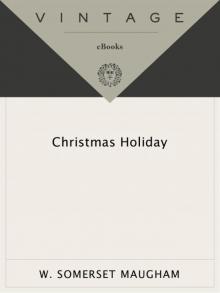 Christmas Holiday
Christmas Holiday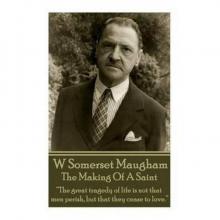 The Making of a Saint
The Making of a Saint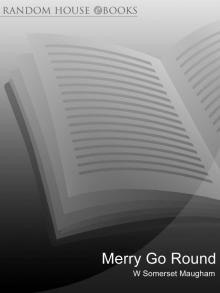 Merry Go Round
Merry Go Round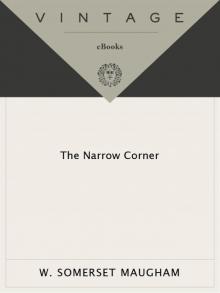 The Narrow Corner
The Narrow Corner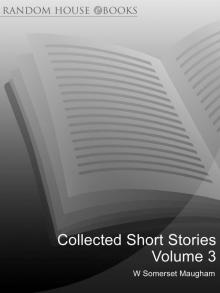 Collected Short Stories Volume 3
Collected Short Stories Volume 3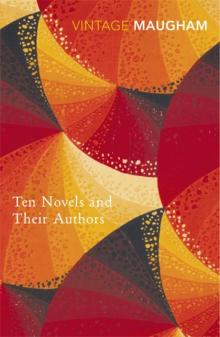 Ten Novels and Their Authors
Ten Novels and Their Authors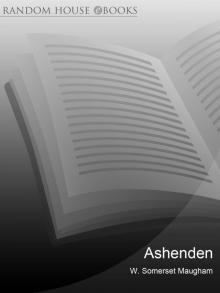 Ashenden
Ashenden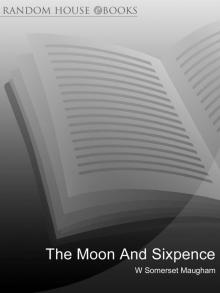 The Moon and Sixpence
The Moon and Sixpence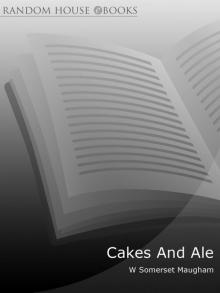 Cakes and Ale
Cakes and Ale Liza of Lambeth
Liza of Lambeth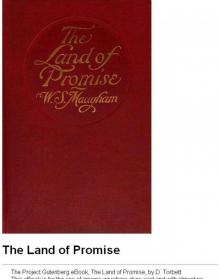 The Land of Promise: A Comedy in Four Acts (1922)
The Land of Promise: A Comedy in Four Acts (1922)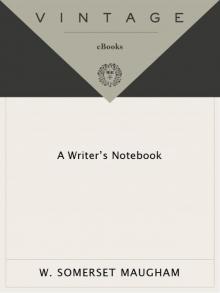 A Writer's Notebook (Vintage International)
A Writer's Notebook (Vintage International)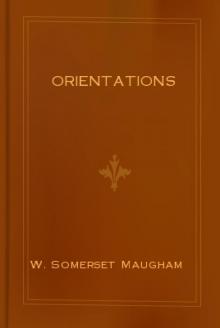 Orientations
Orientations Selected Masterpieces
Selected Masterpieces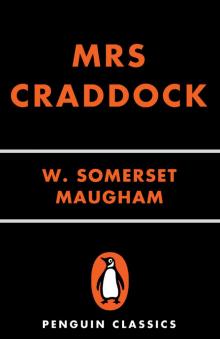 Mrs Craddock
Mrs Craddock The Skeptical Romancer
The Skeptical Romancer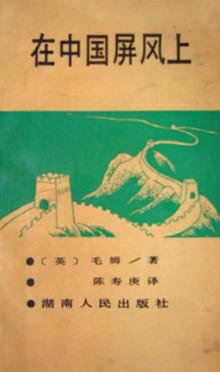 On a Chinese Screen
On a Chinese Screen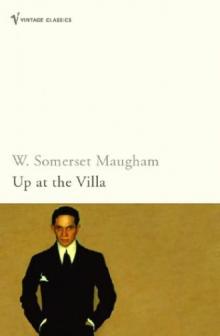 (1941) Up at the Villa
(1941) Up at the Villa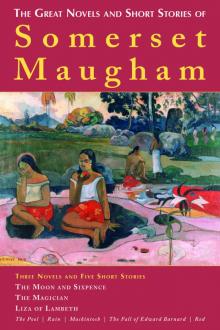 The Great Novels and Short Stories of Somerset Maugham
The Great Novels and Short Stories of Somerset Maugham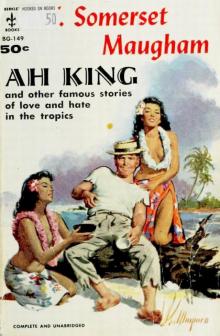 Ah King
Ah King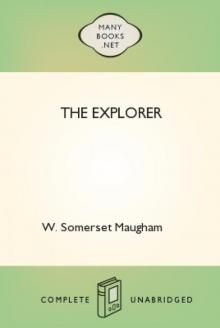 The Explorer
The Explorer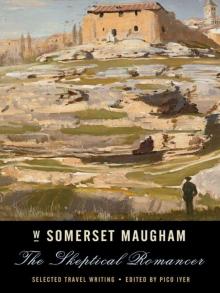 The Skeptical Romancer: Selected Travel Writing (Vintage Departures)
The Skeptical Romancer: Selected Travel Writing (Vintage Departures)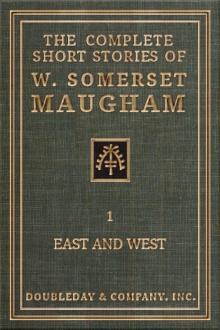 The Complete Short Stories of W. Somerset Maugham - I - East and West
The Complete Short Stories of W. Somerset Maugham - I - East and West